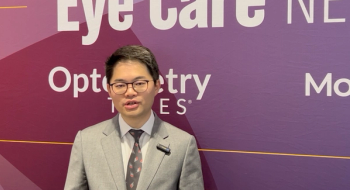
In a presentation at the American Academy of Ophthalmology’s annual meeting in Chicago, T.Y. Alvin Lu, MD, a retina specialist at Johns Hopkins Medicine, discussed the application of large language models (LLMs) in revenue cycle management (RCM).

In a presentation at the American Academy of Ophthalmology’s annual meeting in Chicago, T.Y. Alvin Lu, MD, a retina specialist at Johns Hopkins Medicine, discussed the application of large language models (LLMs) in revenue cycle management (RCM).
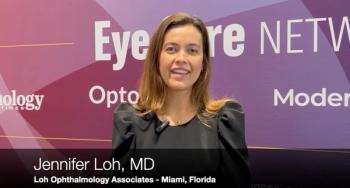
Jennifer Loh, MD, shared insights from on her presentation at the American Academy of Ophthalmology meeting in Chicago on the effects of CSF-1, which is the lowest effective concentration of pilocarpine approved in the United States.
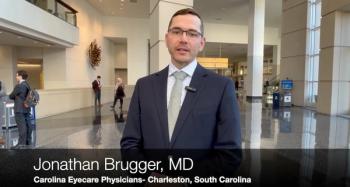
At this year's American Academy of Ophthalmology (AAO) meeting, Jonathan Brugger, MD, spoke about the changing approach to epimacular membranes and the use of brilliant blue in the procedure.

The company will seek a strategic partner to continue development of APX3330, an oral small-molecule inhibitor of Ref-1 for the treatment of non-proliferative diabetic retinopathy.
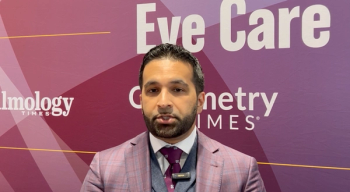
Kamran Riaz, MD, discussed with the Eye Care Network a study on mitomycin intravascular chemoembolization for treating corneal neovascularization. The procedure showed promise, with a 70% success rate at 3 to 6 months, though patient selection is crucial. Some required multiple treatments, but overall outcomes are promising.
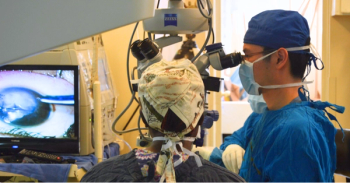
Acknowledging complex dynamics is an important part of traveling abroad as a doctor, according to University of Colorado ophthalmologist Michael Chen, MD, who helped develop an exercise to prepare trainees for the work overseas.

According to the company, its data replicate and expand upon the potential of ER-100 to improve retinal ganglion cell function and restore visual function in a nonhuman primate model of nonarteritic anterior ischemic optic neuropathy.
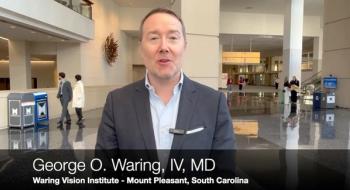
George O. Waring, IV, MD, provides insights from an on-demand poster as part of the annual American Academy of Ophthalmology taking place in Chicago, Illinois. This poster was titled, "Two-Year Clinical Feasibility Trial Outcomes for a Dual-Optic IOL System for the Treatment of Presbyopia and Cataract."
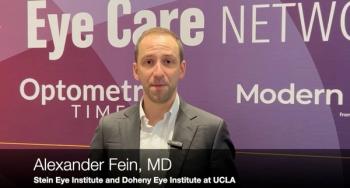
Alexander Fein, MD, spoke with the Eye Care Network to share how to approach a patient presenting with transient vision loss, what this type of vision loss can mean, and what additional testing might be needed to determine the best plan for care.

According to a study presented at the American Academy of Ophthalmology’s annual meeting in Chicago, investigational treatment reduced vision loss and protected key structures in the eye essential for vision.
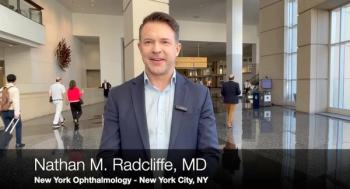
Nathan Radcliffe, MD, shared insights from his presentation at the annual meeting of the American Academy of Ophthalmology entitled, "Early cataract extraction for angle closure glaucoma."
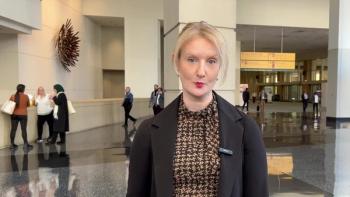
Meghan Berkenstock, MD, an associate professor of ophthalmology at the Wilmer Eye Institute, provides insights on paper from the uveitis free paper section of AAO 2024, about the use of TriNetX database to assess for the incidence and prevalence of both uveitis and its complications.
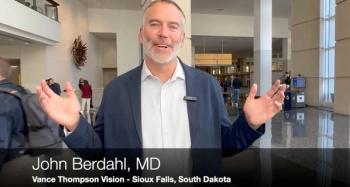
At this year's American Academy of Ophthalmology (AAO) meeting, John Berdahl, MD, spoke about the recent clinical trials of travoprost and its use in patients with prior SLT.

According to a presentation at the American Academy of Ophthalmology’s annual meeting in Chicago, a new study shows customized eyeglasses successfully addressed children’s complex eye needs.

George O. Waring, IV, MD provides insights from an on-demand poster as part of the annual American Academy of Ophthalmology taking place in Chicago, Illinois. This poster shared data on the the 9-month FDA data of the recently approved excimer laser, the TENEO laser, by Bausch + Lomb.
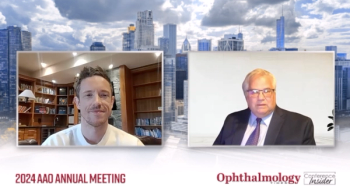
Adam Muzychuck, MD, FRCSC, sat down to discuss his presentation on the defocus curve performance of trifocal IOLs and the outcomes of the near activity vision questionnaire given to patients implanted with the Envy full range of vision IOL at this year's American Academy of Ophthalmology meeting held in Chicago, Illinois.

In data presented at the 128th annual meeting of the American Academy of Ophthalmology in Chicago, the two-year study finds patients with advanced disease can recover some vision.
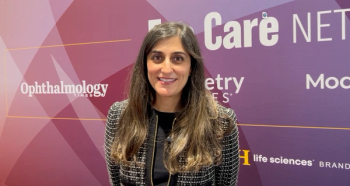
Fatemeh Rajaii, MD, PhD, an associate professor at Wilmer Eye Institute, Johns Hopkins, discusses emerging therapies in thyroid eye disease (TED) from her presentation at the American Academy of Ophthalmology’s annual meeting in Chicago.
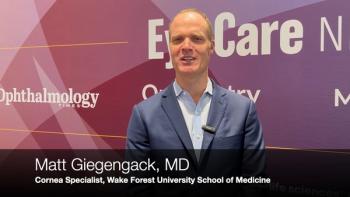
Matt Giegengack, MD, explains how injectable corneal endothelial cell therapy can enhance visual acuity and alleviate glare, offering a versatile alternative to current treatments like DMEK.
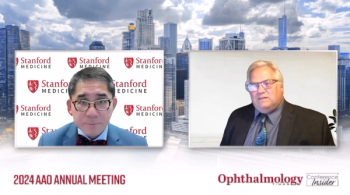
In an interview with Ophthalmology Times, Quan Dong Nugyen, MD, MSc, discusses ongoing research into Tinlarebant, an investigational drug being studied as a treatment for Stargardt disease in adolescents.
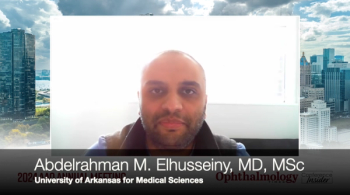
Abdelrahman Elhusseiny, MD, MSc, sat down with David Hutton of Ophthalmology Times to discuss his presentation on the risk of posterior capsular rupture in fellow eyes of cataract surgery at this year's American Academy of Ophthalmology meeting being held in Chicago, Illinois.

According to data presented in a late-breaking oral presentation at the American Academy of Ophthalmology 2024 Annual Meeting in Chicago.1 efficacy and safety from this phase IV study were consistent with data from the Vabysmo phase III DME studies.
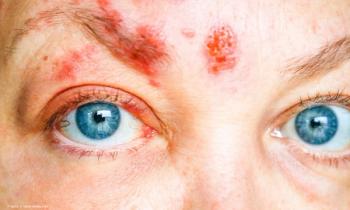
New research presented at the American Academy of Ophthalmology’s Cornea Subspecialty Day is part of the part of the 8-year Zoster Eye Disease Study.

According to the company, there are no FDA-approved pharmacological therapies for age-related cataracts. Its C-KAD eye drop, improves vision in patients with early-to-moderate cataracts, by penetrating the eye to reduce lens clouding, the main cause for cataracts.

According to data presented this week at the 128th annual meeting of the American Academy of Ophthalmology, being held in Chicago, about three-quarters of medication volume remains in multiuse eye drop bottles tossed in the garbage well before FDA-regulated expiration dates.

According to the company, in a confirmatory trial, Epioxa met pre-specified primary efficacy endpoint and exhibited positive tolerability and safety profiles through 12 months, supporting an anticipated NDA submission by the end of 2024.

Centricity Vision announced new ZEPTOLink enhancements, reducing treatment time by up to 60%. These updates, aimed at improving cataract surgery efficiency and control, will be showcased at the 2024 American Academy of Ophthalmology Annual Meeting in Chicago.
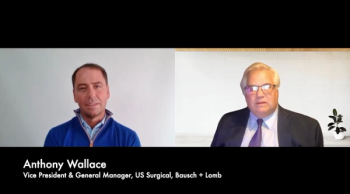
The FDA granted approval to the enVista Envy full range of vision IOLs following Canadian approval in May 2024.

According to the company, enVista Envy IOLs will be commercially available in the U.S. on a limited basis in the coming weeks and more broadly in 2025. Bausch + Lomb is also in the process of seeking regulatory approvals for the lens in additional markets.

A recent paper reveals increasing rates of diabetic retinopathy in young patients with diabetes, sparking concerns over inadequate screening and management, especially among Black and Hispanic youths.